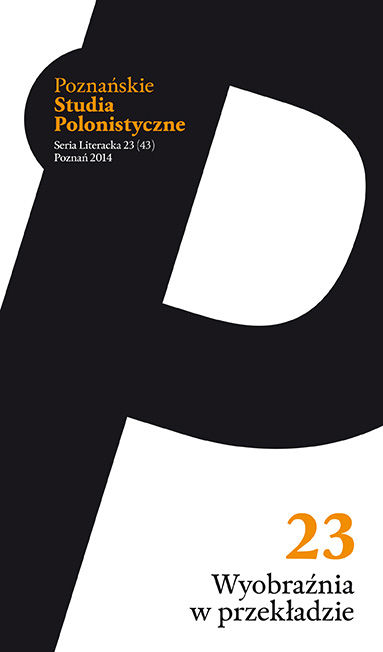Wyobraźnia autora i tłumacza wobec pamięci kulturowej. O Wybrańcu Tomasza Manna i jego polskim przekładzie
Author’s and translator’s imagination in confrontation with cultural memory. On Thomas Mann’s The Holy Sinner and its Polish translation
Author(s): Katarzyna LukasSubject(s): Language and Literature Studies, Studies of Literature, Polish Literature, Philology, Translation Studies
Published by: Wydawnictwo Poznańskie Studia Polonistyczne
Keywords: cultural memory; archive; Middle Ages; montage; ecphrasis; medieval epic; parodistic translation
Summary/Abstract: On the example of Mann’s Der Erwählte (1951) and its Polish version Wybraniec (1960) by Anna Linke, the article demonstrates how the creator’s imagination (the creators are the author and the translator) is related to translation and cultural memory, the basic notions of recent German culture studies. Mann’s novel can be described as a parodistic translation of a medieval epic, a text belonging to German cultural memory, into 20th century discourse and language. The article shows Mann’s translation strategies, whose aim is actualisation of the stocks of cultural memory of German readers: an experimental style imitating Medieval language, specific structure of narration time, represented world, and the narrator’s character, the montage and ecphrasis, which are all techniques calling for creative imagination. The article then demonstrates how Mann’s techniques were rendered in the translation. The analysis shows that Linke’s text, by referring to cultural memory of Polish readers, activates the content which is absent in cultural memory of German readers: this is because the translation employs fabulous and archaic elements derived from Polish historical novel, instead of stylistic and genre-specific techniques of German medieval epics. References to the visual archive of common European cultural memory (medieval iconography and architecture) clearly facilitate the translation, and the translator’s own imagination allows for credible rendition of names of medieval realities. The most important task was the rendition of the medieval dialect, which was fully Mann’s imaginary creation.
Journal: Poznańskie Studia Polonistyczne. Seria Literacka
- Issue Year: 2014
- Issue No: 23
- Page Range: 149-170
- Page Count: 22
- Language: Polish

